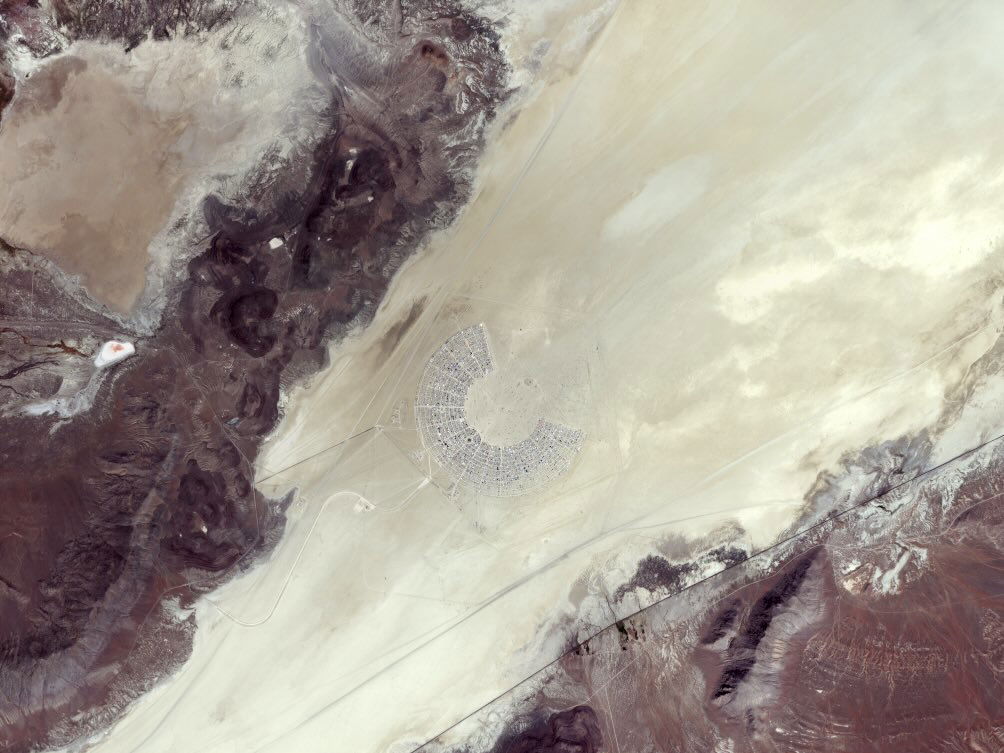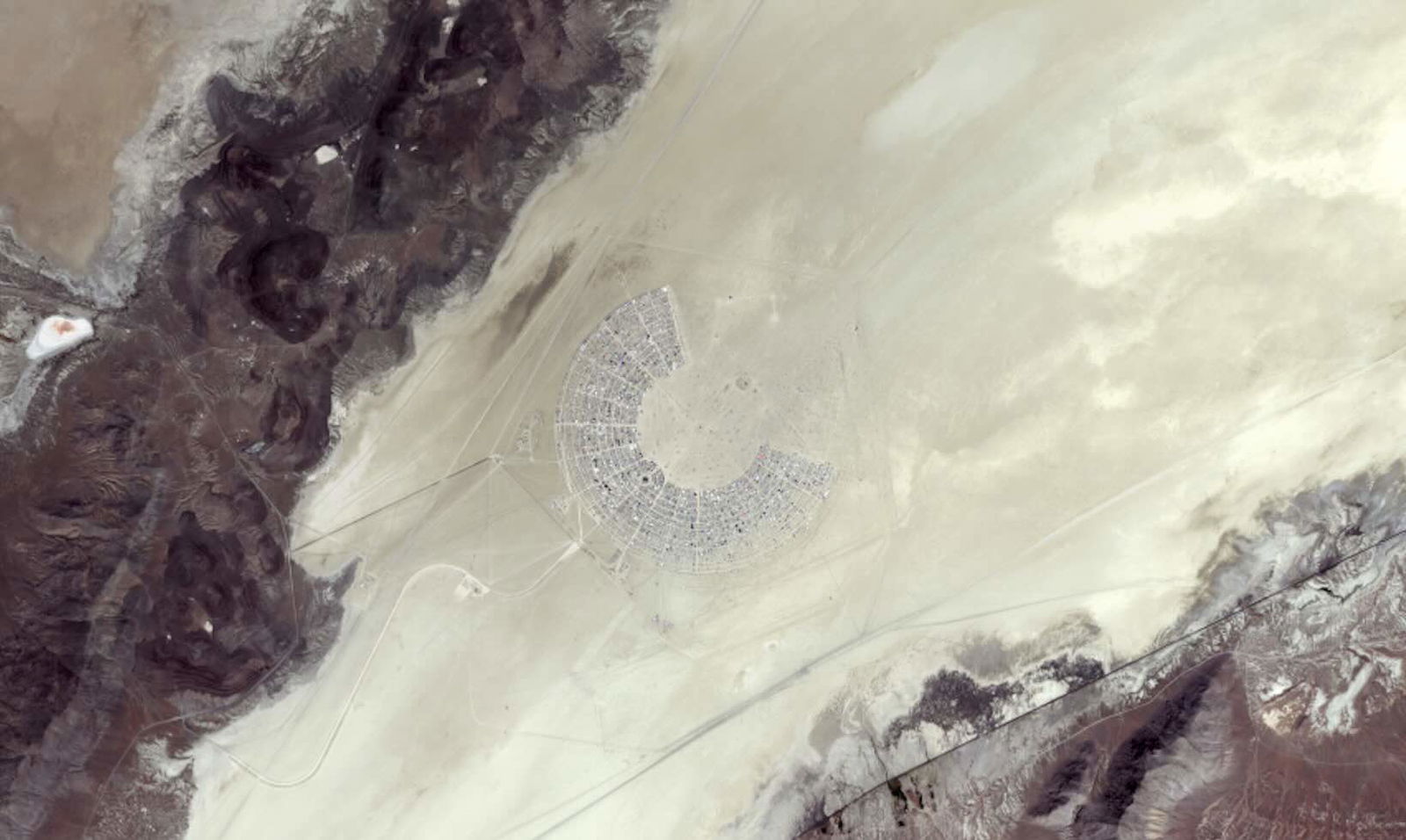A satellite operated by the European Space Agency (ESA) has captured incredible images of an iconic cultural movement and art phenomenon held annually in the Black Rock Desert.
As seen from space, the Burning Man festival resembles a massive alien megastructure more closely than an event geared toward themes that include independence, community, radical self-expression, and decommodification.
However, the sprawling desert gathering was recently captured in vivid detail from far above the Earth by the camera eye aboard one of the trio of satellites comprising the ESA’s Copernicus Sentinel-2 mission. These satellites, each equipped with high-resolution multispectral imagery systems designed to offer unique views of our planet’s surface features, provided an ideal opportunity to capture the full scale of Burning Man.
Northwestern Nevada’s Black Rock Desert, where the event is held each year, is a one-hundred-square-mile (2,600-square-kilometer) region comprised mainly of alkali flats, clays with high pH, and ancient lava beds. Recent ESA imagery reveals the arid, sandy region in vivid contrast to the darker terrain in the surrounding mountains.


The ESA imagery showcases the accumulation of festival goers at Burning Man on the second day of this year’s event, where more than 70,000 individuals convened in late August and early September. Forming a perfect letter “c” shape, the area depicted in the photos represents areas where attendees have gathered in tents, campers, and vehicles for the duration of the event.
More a cultural experiment than an event, Burning Man represents a venue for self-expression through art, music, sexuality, and experimentation, all amid a fundamental rejection of capitalism and the corporate world. Attendees generally engage in “gifting” instead of traditional purchases at the event, which helps instill a brief, albeit profound, community experience for those who attend.
Jon, an artist and past attendee at the event who has brought interactive art pieces for display at Burning Man, told The Debrief that the practice of gifting is more accurately defined as “non-commerce,” rather than an alternative to standard purchases, barter, or trade, calling his art “my gift to the denizens of Burning Man.”
“Our neighbors may gift us coffee every morning,” Jon told The Debrief in an email. “Other people may gift a performance or an alcoholic drink, a back rub, or anything and everything that can possibly be given for the sake of giving a gift, including tangible things like necklaces and such.
“Think of gifting as being without obligation to reciprocate in kind,” Jon added. “People gift [at Burning Man] because they want to give, not because they have to.”
Other themes that are dominant at Burning Man include automobile culture, as well as chemical experimentation, despite the presence of law enforcement at the event who have often ticketed or even arrested attendees in years past for open use of cannabis and other substances.
The event’s unique name is derived from the famous ceremony held at the center of the temporary settlement, where a large anthropomorphic effigy is burned at the event.
The arid region where the event is held is part of one of the largest in the country, formally known as the Great Basin Desert, which spans nearly 190,000 miles (492,000 kilometers).
Formed over millions of years, this massive desert expanse features mountainous regions, detailed in darker coloration in the recent ESA images, as well as lighter sandy areas like the portion of the Black Rock Desert where the Burning Man event is held.
Operating high above the Earth within the same orbit but separated by 180°, the two initial satellites launched as part of the ESA’s Copernicus Sentinel-2 mission capture imagery of the entire planet’s land and coastal areas every five days.
Earlier this month, the satellites were joined in orbit by a third spacecraft, Sentinel -2C, which has helped to expand the mission’s high-resolution imaging capabilities even further.
Sentinel-2C -2C captured the recent imagery amid a collection of other striking images of Earth and its landscapes, which the ESA recently said have “already surpassed expectations.”
Additional information about the mission can be found on the ESA’s website.
This article was updated with additional details about commerce at Burning Man on Sept. 24, 2024.
Micah Hanks is the Editor-in-Chief and Co-Founder of The Debrief. He can be reached by email at micah@thedebrief.org. Follow his work at micahhanks.com and on X: @MicahHanks.

